Threat to demolish Auschwitz barrack
A barrack which belonged to the concentration camp Auschwitz-Monowitz in Poland is being threatened with demolition. The structure had been displaced to be used as a shed. The present owner seems to intent to tear down the very much worn out wooden construction.
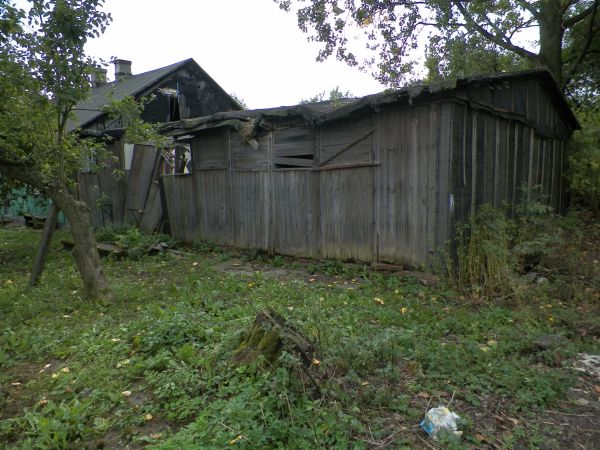
Auschwitz-Monowitz, also known as Auschwitz III was located at about six kilometers from the main camp Auschwitz (Auschwitz I in Oświeҫim). The camp for forced labor was established in October 1942 in the immediate vicinity of the village Monowice and had a capacity of more than ten thousand prisoners. These prisoners, mainly Jews, were employed by the SS as forced labor for the nearby industrial site of the German chemical group of IG Farben.
An important part of this site was a factory, constructed by the prisoners, for the production of Buna a synthetic rubber which had to solve the lack of natural rubber. The production however would never start up. On the industrial site synthetic petrol and other artificial materials were produced.
Over 20,000 prisoners died in Monowitz as a result of the inhuman circumstances in the camp and the heavy labor. In contrary to the main camp and the destruction camp Auschwitz-Birkenau (Auschwitz II) of which the remains are to be visited today, there is little to nothing left from Monowitz. The factories were taken over by the Polish after the war and the camp was torn down. The village has been built on the camp site, mainly with the material from the camp.
The barrack which now is being threatened to be torn down originally was a wash-place for prisoners in the hospital department of Monowitz. The original German texts (“So wirst Du rein”= “This is how you get clean”) are still clearly visible on the roof supports. The small building is described in the book “Auschwitz- Oświeҫim, Oświeҫim-Auschwitz” of Hans Citroen and Barbara Starzyňska. The couple visited the Polish village of Oświeҫim many times together in order to look for traces of Auschwitz outside the museum sites.
The wash barrack, according to Hans Citroen, is not only a war inheritance but also literary inheritance, because Auschwitz survivor Primo Levi dedicates several passages to the texts as these have been painted in the barrack in the ending of the worldwide edition of his book “If This Is a Men”.
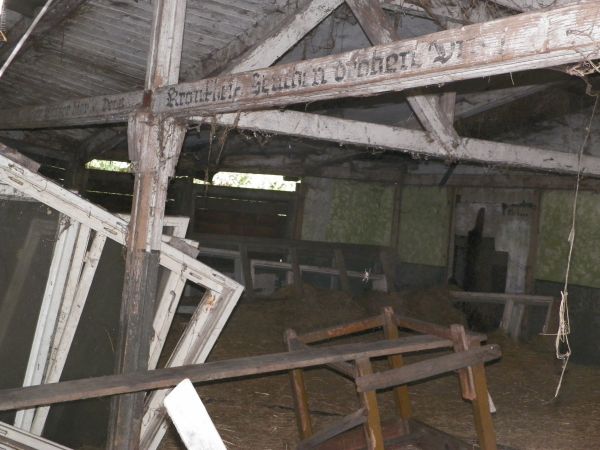
A member of the STIWOT-forum decided to pay a visit to the barrack by himself, motivated by the book of Hans Citroen and Barbara Starzyňska. The owner allowed him to take pictures and to inspect the interior. The man should have informed him of the intention to soon demolish the barrack. The Auschwitz museum has been informed accordingly, but so far a reaction has been lacking. Although the construction is in a bad shape, it could be an impressive and authentic museum piece. The wooden barracks in Auschwitz-Birkenau are mainly reconstructed replicas.
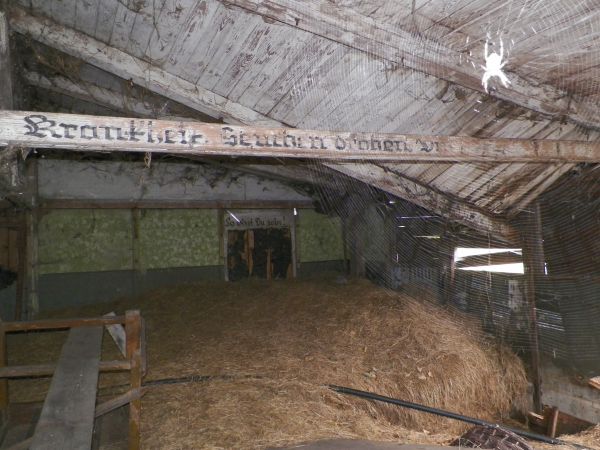
Earlier, already in August 2011, the so called “Solahütte” has been demolished. The wooden hut in a rural area was a holiday resort for the SS wardens of the camp situated at approximately 30 kilometers from Auschwitz. In 2007, the United States Holocaust Museum attained the possession of the photographs which had been made in this place. Next to the camp commander Rudolf Höss also the infamous camp doctor Josef Mengele and Josef Kramer, later on the commander of camp Bergen-Belsen, have been photographed here. Other examples of the negligence with which parts of the Auschwitz sites are being treated have been described in the book of Hans Citroen and Barbara Starzyňska.
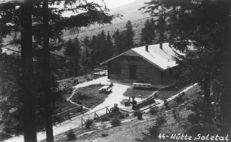
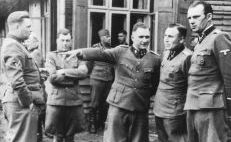
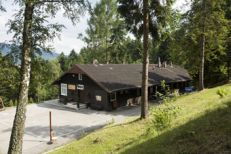
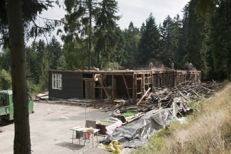
Pictures Solahütte: USHMM (upper two) and Hans Citroen (lower two).
In The Netherlands, people are engaged in the researching and recovering of barracks of the (transition) camp Westerbork, which received a different purpose and destination after the war. In 2011 it was also decided to restore the house of the camp commander which was in a deplorable state.
In the “National Monument Camp Vught”, today a brick camp barrack will be brought back into its original state. A similar feeling of urgency seems to be lacking in Poland. With the possible demolition of the Monowitz barrack, a physical memory of a tragic part of the European history again is threatened to disappear.

Auschwitz-Monowitz, also known as Auschwitz III was located at about six kilometers from the main camp Auschwitz (Auschwitz I in Oświeҫim). The camp for forced labor was established in October 1942 in the immediate vicinity of the village Monowice and had a capacity of more than ten thousand prisoners. These prisoners, mainly Jews, were employed by the SS as forced labor for the nearby industrial site of the German chemical group of IG Farben.
An important part of this site was a factory, constructed by the prisoners, for the production of Buna a synthetic rubber which had to solve the lack of natural rubber. The production however would never start up. On the industrial site synthetic petrol and other artificial materials were produced.
Over 20,000 prisoners died in Monowitz as a result of the inhuman circumstances in the camp and the heavy labor. In contrary to the main camp and the destruction camp Auschwitz-Birkenau (Auschwitz II) of which the remains are to be visited today, there is little to nothing left from Monowitz. The factories were taken over by the Polish after the war and the camp was torn down. The village has been built on the camp site, mainly with the material from the camp.
The barrack which now is being threatened to be torn down originally was a wash-place for prisoners in the hospital department of Monowitz. The original German texts (“So wirst Du rein”= “This is how you get clean”) are still clearly visible on the roof supports. The small building is described in the book “Auschwitz- Oświeҫim, Oświeҫim-Auschwitz” of Hans Citroen and Barbara Starzyňska. The couple visited the Polish village of Oświeҫim many times together in order to look for traces of Auschwitz outside the museum sites.
The wash barrack, according to Hans Citroen, is not only a war inheritance but also literary inheritance, because Auschwitz survivor Primo Levi dedicates several passages to the texts as these have been painted in the barrack in the ending of the worldwide edition of his book “If This Is a Men”.

A member of the STIWOT-forum decided to pay a visit to the barrack by himself, motivated by the book of Hans Citroen and Barbara Starzyňska. The owner allowed him to take pictures and to inspect the interior. The man should have informed him of the intention to soon demolish the barrack. The Auschwitz museum has been informed accordingly, but so far a reaction has been lacking. Although the construction is in a bad shape, it could be an impressive and authentic museum piece. The wooden barracks in Auschwitz-Birkenau are mainly reconstructed replicas.

Earlier, already in August 2011, the so called “Solahütte” has been demolished. The wooden hut in a rural area was a holiday resort for the SS wardens of the camp situated at approximately 30 kilometers from Auschwitz. In 2007, the United States Holocaust Museum attained the possession of the photographs which had been made in this place. Next to the camp commander Rudolf Höss also the infamous camp doctor Josef Mengele and Josef Kramer, later on the commander of camp Bergen-Belsen, have been photographed here. Other examples of the negligence with which parts of the Auschwitz sites are being treated have been described in the book of Hans Citroen and Barbara Starzyňska.




In The Netherlands, people are engaged in the researching and recovering of barracks of the (transition) camp Westerbork, which received a different purpose and destination after the war. In 2011 it was also decided to restore the house of the camp commander which was in a deplorable state.
In the “National Monument Camp Vught”, today a brick camp barrack will be brought back into its original state. A similar feeling of urgency seems to be lacking in Poland. With the possible demolition of the Monowitz barrack, a physical memory of a tragic part of the European history again is threatened to disappear.
Used source(s)
- Source: STIWOT
- Published on: 22-09-2012 20:37:58
Latest news
- 03-10: Photo report other Airborne commemorations and events 2025
- 01-10: Photo report commemoration Wiltshire memorial
- 30-09: Photo report other Airborne commemorations and events 2025
- 26-09: Photo report Ounveiling Plaque 'Gunners within 1st Airborne Division'
- 25-09: Photo report unveiling Plaque 'Gunners within 1st Airborne Division'
- 24-09: Photo report Airborne commemoration Driel
- 23-09: Photo report Airborne Landing and Commemoration
- 22-09: Photo report Airborne Memorial Service Oosterbeek
- 23-06: Keeping the memory of the trails to freedom alive
- 12-04: Understanding the German side of the fighting in Normandy


